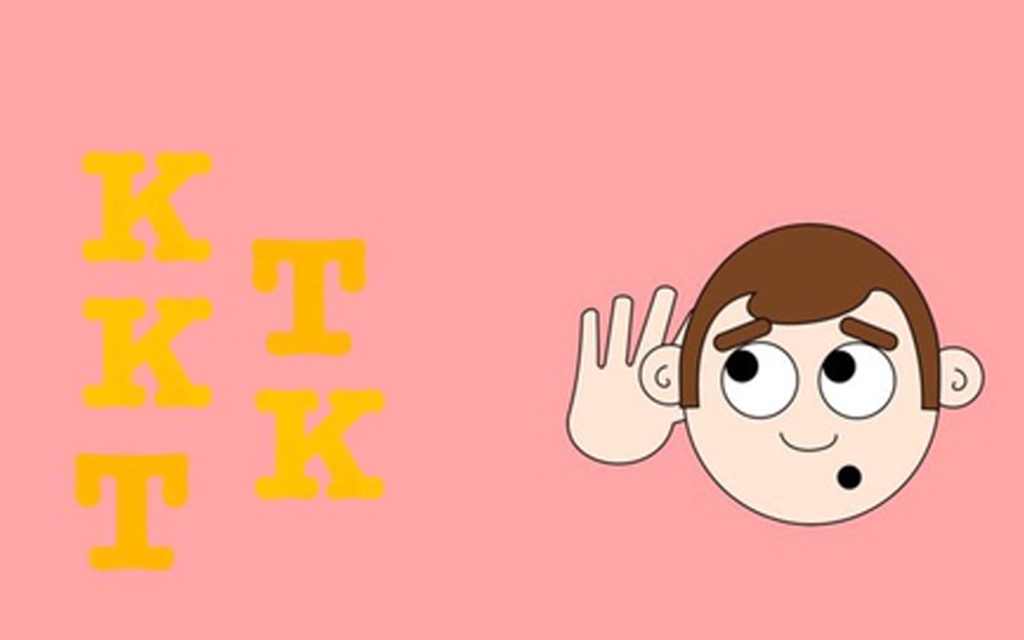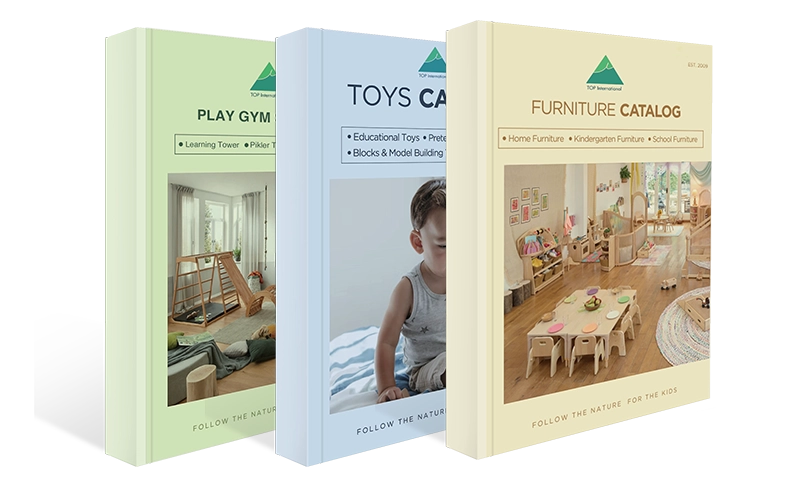Is your child struggling to tell the difference between similar sounds like “b” and “d” or “ch” and “sh”? Do they often misunderstand spoken instructions, even in quiet environments? Are you concerned that poor Auditory Discrimination may delay their reading or speaking abilities and hurt their classroom performance?
Auditory Discrimination is a foundational listening skill that allows children to recognize and differentiate between sounds in language. Enhancing this ability not only strengthens speech clarity but also improves reading comprehension, memory, and attention span. With strong auditory processing, children follow directions better, express themselves more clearly, and adapt more confidently in learning environments.
There are proven, practical ways to strengthen a child’s Auditory Discrimination—many of which can be done at home or in the classroom. Let’s explore them together.

聴覚識別とは何ですか?
聴覚弁別とは、脳が明確に区別できる音を認識し、区別する能力を指します。これには、音素(音声における最も小さな音の単位)間の微妙な違いに気づくことが含まれます。例えば、「b」と「p」、あるいは「f」と「v」の音を聞き分けることなどです。例えば、子どもが「cat」と「cap」の違いを聞き取れない場合、綴り、読解、あるいは言葉によるコミュニケーションに困難が生じる可能性があります。
聴覚識別の背後にある科学
神経学的観点から見ると、聴覚弁別は脳の聴覚皮質と言語中枢に関わっています。子どもが音を聞くと、脳は素早く音を処理し、意味を割り当てなければなりません。このプロセスが不十分であったり未発達であったりすると、子どもは音を正しく聞いていても、理解したり適切に反応したりできない可能性があります。これは難聴の問題ではなく、脳が音を解釈する能力の問題です。
Auditory discrimination is part of the more prominent family of auditory processing skills, which also includes:
- 聴覚記憶 – 聞いたことを記憶する能力
- 聴覚による図地識別 – 騒がしい環境でも特定の音に集中する能力
- 聴覚的シーケンス – 音や単語の順序を認識する

聴覚識別能力の弱さの兆候
聴覚識別能力が低い子供は次のような症状を示すことがあります。
- 複数のステップから成る指示に従うのが難しい
- 似た発音の単語を混同する
- 言語発達の遅れ
- 一般的な単語の発音ミス
- 文字の音を覚えたり、音読したりするのが苦手
これらの課題は、特に早期識字教育において、学校生活でのフラストレーションにつながることがよくあります。幸いなことに、適切なサポートがあれば、これらのスキルは大幅に向上する可能性があります。
聴覚識別の重要性
聴覚識別能力は、明瞭な発音、確かな言語理解、そして学業成績の向上に不可欠です。聴覚識別能力により、子どもたちは似たような音を区別し、指示に従い、読み書きを習得できるようになります。
言語と識字能力への影響
音韻認識、つまり単語の音を聞き取り、操る能力は、聴覚識別と直接結びついています。この能力がないと、子どもは以下のことに苦労する可能性があります。
- 音声的に読むことを学ぶ
- 韻や音節を理解する
- 正確に綴る
- 話し言葉や書き言葉の誤りを検出する
聴覚識別力の低下は語彙習得にも影響を及ぼします。「船」と「羊」のような単語の区別がつかない場合、子どもは教えられたことや伝えられていることを誤解してしまう可能性があります。
社会への影響
学業上の困難以外にも、聴覚識別能力が弱い子どもは孤立感を感じることがあります。例えば、以下のようなことが考えられます。
- グループでの会話を避ける
- 冗談や皮肉を誤解する
- イライラしたり引きこもったりする
- 混乱や圧倒感から行動上の問題が生じる
社会情緒的健康はコミュニケーションと密接に結びついています。聴覚識別能力を高めることは、教室で役立つだけでなく、友情、自信、そして家族との交流を深めることにも役立ちます。
聴覚識別力を強化することの利点
記憶力と集中力の向上
読解力と理解力の向上
より明瞭な発音
学業成績の向上
社会的な場面での自信の向上

Signs Your Child May Have Weak Auditory Discrimination
As a parent or kindergarten educator, it’s essential to recognize the early signs of weak auditory discrimination, especially during the critical language development years between ages 2 and 6. This auditory skill is what allows children to differentiate between sounds, syllables, and phonemes (the smallest units of sound in language). When this ability is underdeveloped, it can lead to a range of challenges, from speech delays to learning difficulties in reading and comprehension.
One of the most common signs is confusion between similar-sounding words or letters. For example, a child may mix up “bat” and “pat” or hear “cat” when someone says “cap.” These errors aren’t just cute mispronunciations—they are indicators that the child’s brain is not processing auditory information.
Another red flag is difficulty following verbal instructions, especially in group environments like the classroom. If a child frequently asks for repetition or seems to misunderstand tasks that were clearly explained, this could signal a processing gap. It’s not about intelligence—it’s about how their brain decodes what they hear.
You may also notice delayed speech development. Children with auditory discrimination issues often struggle to reproduce sounds correctly because they don’t hear the differences clearly in the first place. As a result, they may avoid speaking or develop unusual speech patterns that persist longer than expected.
Other behavioral signs include frequent daydreaming, inattentiveness during storytime, or poor participation in phonics activities. These kids may seem distracted, but the root issue may be auditory, not visual or behavioral.
If you recognize several of these signs in your child or student, it’s worth taking proactive steps. Weak auditory discrimination is a developmental delay, not a permanent disability, and with targeted support, many children can catch up quickly.
Key Benefits of Strengthening Auditory Discrimination
Strengthening a child’s auditory discrimination is one of the most impactful steps we can take to support their early learning and long-term academic success. While it may seem like a small skill—simply telling sounds apart—it plays a foundational role in language, communication, and literacy.
One of the most direct benefits is clearer speech development. When children can accurately hear differences between sounds like /b/ and /d/ or /ch/ and /sh/, they can replicate those sounds more confidently when speaking. This leads to better pronunciation, fewer speech errors, and greater self-assurance when expressing oneself.
Another critical benefit is reading readiness. Auditory discrimination is the gateway to phonemic awareness—the ability to recognize and manipulate the sounds that make up words. Without strong sound differentiation, children may struggle with phonics, which affects their ability to decode and understand words while reading. In other words, the path to strong reading starts with strong listening.
Improved listening and comprehension are also significant benefits. Children with refined auditory discrimination are more capable of following multi-step instructions, understanding classroom discussions, and processing new vocabulary. This makes them more confident participants in group settings and less reliant on repeated explanations.
There are even social-emotional benefits. A child who understands spoken language is less likely to feel frustrated or left out. They can engage more effectively in conversations, pick up on tone and emotion, and develop stronger peer relationships. Better communication reduces anxiety and builds confidence in both academic and social environments.
From a long-term perspective, auditory discrimination is also linked to better memory, attention, and problem-solving. These cognitive skills all rely on the brain’s ability to organize, store, and retrieve verbal information efficiently. Strengthening auditory skills lays a neurological foundation that supports all future learning.
In short, investing in a child’s auditory discrimination is like giving them the tools to unlock language, learning, and confidence. Whether at home or in the classroom, it’s a skill worth nurturing every single day.

Proven Strategies to Enhance Auditory Discrimination at Home
When it comes to nurturing a child’s auditory discrimination abilities, the home environment plays a decisive role. As a parent or caregiver, you don’t need advanced degrees in early childhood education to make a meaningful difference—you need consistency, intention, and the correct set of activities that stimulate sound awareness. In this section, we’ll explore the most effective home-based strategies to develop and strengthen auditory skills, combining educational insights with Montessori and Reggio-inspired methods.
Games and Activities for Daily Practice
Children learn best through play, especially when the activities are embedded into daily routines. One of the most accessible and impactful ways to sharpen auditory discrimination is through:
Listening games
These can be as simple as “Sound Hunt,” where the child closes their eyes and guesses familiar household sounds (a closing drawer, a spoon tapping a cup, footsteps), to more structured exercises like “I Hear With My Little Ear.”
Rhyming games
They are especially effective, as they help children pick up on the subtle differences and similarities in sound endings. You can ask questions like “What rhymes with ‘cat’?” and then explore all the possibilities. The point here is not perfection but repetition—repeating sound patterns helps the brain organize and distinguish them more accurately.
Clapping syllables
Another fun way to build auditory awareness. Choose simple words and have the child clap out each syllable (“apple” = two claps, “banana” = three). This not only improves auditory segmentation but also prepares them for decoding words in reading.
Daily conversations also offer opportunities. Ask your child to repeat sentences you say, or play “telephone” to see how well they’re catching sound details. These games may feel like play, but neurologically, they are training sessions for the brain.
幼児向け聴覚識別活動
Children between the ages of 3 and 5 are in a sensitive developmental window where their brains are especially receptive to auditory learning. The groundwork for language, listening, and phonemic processing is laid during this time. Failing to nurture auditory discrimination skills at this stage can result in long-term academic delays and speech issues. However, children can build the foundational skills necessary for successful reading and communication with early intervention and daily reinforcement.
Auditory discrimination is not just about hearing clearly—it’s about the brain’s ability to process, analyze, and interpret subtle sound differences. This includes differentiating between similar sounds like “p” and “b,” distinguishing one voice in a noisy classroom, or recognizing rhyming patterns in words. These tasks may sound simple to adults, but require complex cognitive coordination for young children.
未就学児にとって、聴覚スキルは遊び、インタラクティブな言語体験、音楽、そして物語を通して学ぶことで最も大きな恩恵を受けます。正式なレッスンでは集中力を維持することが難しい場合が多いですが、想像力豊かで多感覚を刺激する活動は、大きな成長につながる可能性があります。以下では、この発達領域における最も重要な2つの要素、すなわちスキルそのものと、目的のある活動を通してそれらをどのように育むかについて考察します。
聴覚識別能力
聴覚処理の構成要素を理解することは、聴覚処理を強化するための第一歩です。聴覚識別の枠組みの中で最も重要な3つの要素を以下に示します。
音韻認識
音韻認識とは、言語の音構造を認識し、操作する能力を指します。これは、押韻、音節の分節化、単語のパターン認識を含む包括的な用語です。音韻認識が欠如している未就学児は、後々、単語の解読、綴り、読解に苦労する可能性があります。
このスキルにより、子どもたちは次のことができるようになります。
- Break down words into syllables (e.g., “elephant” has three syllables)
- 韻を踏んでいる単語や同じ音で始まる単語を特定する
- 複数の音素を組み合わせて単語を形成する
音韻認識を育むということは、子どもたちが「音に気づく」こと、つまり言葉の発音や構造、そしてそれらの構造をどのように操作すれば新しい意味が生まれるかに意識を向けることを意味します。リズミカルな手拍子、歌、あるいは楽しい韻遊びを通して音韻認識を育むことで、自然で楽しい方法で深い聴覚学習を身につけることができます。
音韻認識
音韻認識の一部である音素認識は、より洗練されたもので、単語の個々の音、つまり音素を聞き取り、操作する能力を指します。これは、将来の読解力向上に繋がる最も重要なスキルと言えるでしょう。音素を分離・修飾できる子どもは、自信を持って読み書きできるようになる可能性が高くなります。
音韻意識が強い未就学児は次のことができます。
- 単語の最初または最後の音を識別する(「「sun」はどんな音で始まりますか?」)
- 別々の音素を組み合わせて単語を作ります(「/c/ /a/ /t/ は… 猫になります!」)
- 音素を入れ替えて新しい単語を作ります(「『mat』の /m/ を /s/ に変えると新しい単語は何になるでしょうか?」)
このスキルを身につけるのに、高度な語彙力は必要ありません。むしろ、集中して聞き、話し言葉に継続的に触れ、遊び心のある音の操作をすることが求められます。

騒音下での音声認識
This skill, also referred to as auditory figure-ground discrimination, is often overlooked but critical, especially in classrooms and group settings. It involves focusing on a single sound source or speaker amidst background noise. Preschoolers who struggle with this may appear distracted or inattentive in noisy environments.
騒音下での音声知覚を発達させることで、子どもたちは次のことができるようになります。
- クラスメイトが話しているにもかかわらず、先生の指示に従う
- テレビをつけながら親の読書を聞く
- 混雑した騒がしいイベントでも会話に集中できる
多くの子ども、特に注意力の問題や軽度の聴覚弁別障害のある子どもにとって、このスキルを身につけるには、徐々に雑音の要素を取り入れる制御された環境での練習が必要です。これにより、時間の経過とともに、関連する聴覚入力に集中する能力が磨かれていきます。
スキルは基礎を築くものですが、未就学児の聴覚識別能力を訓練する最良の方法は、魅力的でインタラクティブな課題を通して行うことです。以下のアクティビティは、聴覚知覚と識別能力の特定の領域を対象としており、家庭や教室で簡単に実践できます。
聴覚ハイキング
未就学児を外に連れ出し、「聴覚ハイキング」に出かけましょう。これは、ゆっくりと静かに、ただ聞くことだけに集中して歩くハイキングです。鳥のさえずり、犬の鳴き声、葉のざわめき、車の通り過ぎていく音など、聞こえる様々な音を指摘するように促しましょう。
より魅力的にするために:
- 印刷可能なサウンド スカベンジャー ハント チェックリストを使用します。
- 電話でサウンドを録音し、後でマッチングゲームで再生します。
- 「その音は近かったか遠かったか?音は大きかったか小さかったか?」のような質問をしてみましょう。
この活動は、聴覚的注意と環境音の識別力を強化し、教室での集中的なリスニングの前段階となります。
楽器の識別
本物の楽器でもデジタル楽器でも、お子様に様々な楽器に触れさせてあげましょう。それぞれの楽器を演奏し、お子様に楽器の名前を尋ねてみましょう。その後、背後で音を出して、その楽器の名前を尋ねてみましょう。
このゲームは未就学児が以下のことを学ぶのに役立ちます。
- 音調の違い
- 音源識別
- 反復による聴覚記憶
これは、処理能力に問題のある子どもの言語習得や聴覚弁別療法に深く関係するリズムトレーニングへの自然な入り口でもあります。
動物の名前
この楽しい言語ゲームは、音への意識と音素の修正を促します。動物の名前をわざと間違って発音してみましょう!例えば、「dog(犬)」ではなく「log(丸太)」と言って、「ちょっと待って、私、ちゃんと発音できたかな?」と聞いてみましょう。
子どもたちに次のことを奨励しましょう:
- 間違った音素を分離して訂正します
- 正しい単語を繰り返します
- 面白いバージョンを作って間違いを見つけよう
This reinforces phonemic precision and critical listening, both essential for literacy.
韻を踏むフラッシュカード
猫、帽子、コウモリ、ネズミなど、韻を踏むものが描かれたイラスト付きのフラッシュカードを使いましょう。お子さんに単語を声に出して読み聞かせ、セットの中から韻を踏むカードを1枚選ばせましょう。
難易度を上げる:
- 視覚的な手がかりなしに韻を踏む
- 彼らに韻を踏むように頼む
- 意味のない韻を踏んでどれが本物かを見分ける
これは、早期の読解力、聴覚識別目標、音韻認識の発達をサポートします。

推測してください
家族や先生が話しているフレーズを録音し、ランダムに再生します。お子様に、声、ピッチ、イントネーションから誰が話しているのかを聞き分けさせましょう。
これにより次のことが促進されます:
- 音声パターン認識
- 聴覚記憶と推論
- 騒がしい環境でのリスニング
このゲームは、現実世界でのリスニングに対する自信を養うもので、聴覚弁別言語療法を受ける子供たちに特に役立ちます。
ピッキー・パペッツ
「聞くのが下手」な、おかしな人形を作りましょう。人形はいつも「I love that!(猫のことだよ!)」と発音を間違えます。
お子様の課題は以下のとおりです。
- 人形を修正する
- 正しい単語を繰り返します
- 対象の音素を強調する
このゲームは、音の正確さを自己監視する能力を養い、聴覚の間違いを修正する自信を養います。
音をつなぐ
「fan」と「van」、「sheep」と「ship」のように、似た発音の単語をペアにして使ってみましょう。声に出して読んで、同じか違うか尋ねてみましょう。
次の方法でチャレンジを強化します。
- 単語の複雑さの増加
- 意味のない言葉を混ぜる
- 気を紛らわせるためにBGMを追加する
これ で基礎的な聴覚識別訓練は、子供たちをより高度な聴覚識別の訓練と評価に備えさせます。
聴覚識別活動で子どもたちの読み書き能力を育成
読み書きの基礎は、子どもが鉛筆を手に取ったり本を開いたりするずっと前から始まっています。それは聞くことから始まります。具体的には、脳が様々な音を聞き、認識し、区別する能力、つまり聴覚識別能力です。聴覚識別能力がしっかりしていないと、子どもはフォニックス、デコード、そして流暢な読み書きに苦労する可能性が高くなります。
聴覚に基づく学習に重点を置くことは、子どもが言語への受容性が最も高い幼少期に大きな成果をもたらします。この時期は、楽しく、興味をそそり、読み書き能力の前段階の育成に非常に効果的な聴覚弁別活動を導入するのに最適です。これらの活動は、注意力、記憶力、順序付け、音処理といった中核的な認知能力を鍛え、将来の読み書きと言語能力の成功の基盤を築きます。
聴覚識別能力が読み書き能力獲得前の子どもにとってなぜ重要なのか
子どもたちは、まず音の違いを認識してからでないと、文字や単語に音を当てはめることができません。この能力は、以下のことに影響を及ぼします。
- 韻と音節を検出する
- 始まりと終わりの音を認識する
- 文字の音と書かれた記号を関連付ける
- 知らない単語を読むときは音読する
聴覚弁別は、読み書きにおける「耳の訓練」段階と考えてください。音楽家が音程と音色を識別するように、読者は/s/と/sh/、あるいは/b/と/d/を区別する必要があります。これらの違いは大人にとっては些細なものに思えるかもしれませんが、幼い学習者にとっては計り知れないほど大きな意味を持ちます。
聴覚弁別機能の問題に対処するには、幼稚園や保育園が非常に重要です。特に、子どもに発達の遅れや言葉による指示に従うのに苦労する兆候が見られる場合はなおさらです。これらの問題が放置されると、読字障害、言語発達の遅れ、そして学級運営の課題へと発展する可能性があります。そのため、聴覚弁別機能訓練は、早期介入や言語療法の中核を成す要素となることが多いのです。

幼児期における聴覚識別能力の弱さの兆候
この分野で追加のサポートが必要なお子様には、次のようなことが考えられます。
- Mix up similar-sounding words (“coat” vs “goat”)
- Struggle to hear the differences in rhymes
- Seems inattentive during verbal instructions
- 言葉が遅れている、または語彙が限られている
- 聴覚識別評価または聴覚識別テストに不合格
Parents and educators should not confuse these behaviors with laziness or a lack of interest. Often, it’s a case of an underdeveloped auditory system. The solution lies in consistent, targeted activities that reinforce sound recognition in various forms—from environmental noises to spoken language cues.
遊びに基づいた音の学習を通して読み書き能力を高める
暗記や強制的な音読練習とは異なり、音遊びは直感的で楽しいものです。日常生活に自然に溶け込み、学習を遊びのように感じさせます。動物の鳴き声を聞き分けたり、音節を手拍子したり、韻を踏むカードを分類したりするアクティビティは、聴覚と理解の橋渡しをします。
さらに、これらの練習は聴覚知覚と識別力と、次のような幅広いスキルとのつながりを強化します。
- 言語的ワーキングメモリ
- 注意持続時間
- 単語の分割
- ストーリーの順序
脳が音をより効率的に処理・分類できるようになるにつれて、子どもたちは話し言葉を解釈し、会話に参加し、最終的には印刷された言語を認識する能力が向上します。これらのスキルを早期に習得することで、小学校の後半で読みの補習指導が必要になる可能性を減らすことができます。
音韻認識と音素認識
聴覚弁別訓練に取り組む教育者や保護者にとって、これら2つの用語の違いを理解することは非常に重要です。これらはしばしば同じ意味で使われますが、子どもの発達において異なる役割を果たします。
| 特徴 | 音韻認識 | 音韻認識 |
|---|---|---|
| 意味 | 単語の音構造の認識と操作を含む幅広いスキル | 単語の個々の音(音素)に焦点を当てた、より狭いスキル |
| タスクの例 | 韻の識別、音節の数え方 | 「dog」の最初の音(/d/)を分離する |
| 関連性 | 単語の分節と韻の認識の基礎 | 解読とスペルに直接結びついている |
| 活動 | 韻を踏むゲーム、音節の拍手、文の区切り | Sound blending, phoneme deletion, and sound substitution |
| 年齢重視 | 幼稚園で現れ、幼稚園を通して強化される | Emerges in late preschool, crucial in kindergarten, and first grade |
| Develop an early sound structure understanding | 早期の音構造理解を養う | フォニックス、読み書き、スペリングの成功を予測します |
どちらのスキルも重要です。しかし、音韻認識は、子どもたちが正式な読み方指導を受ける前の最終段階です。音韻認識がなければ、たとえ優秀な読者であっても、新しい単語や馴染みのない単語に出会ったときにつまずいてしまう可能性があります。
The Montessori Perspective: How Our Environment Shapes Listening Skills
で Montessori environment, every aspect of the classroom is intentionally designed—not just to support academic learning but to cultivate essential life skills, such as listening. Listening is not merely hearing; it’s a conscious act of attention, focus, and interpretation. Montessori educators understand that listening is developed, not automatic, and that the child’s environment plays a crucial role in this development.
A Prepared Environment Encourages Active Listening
One of the core principles of モンテッソーリ教育 is the prepared environment—a space designed to promote independence, focus, and sensory engagement. In this environment, sound is never random or chaotic. Instead, it is used purposefully and respectfully. There are no blaring TVs, loud conversations, or noisy distractions. This purposeful quiet creates the ideal atmosphere for children to tune into subtle sounds, such as a soft voice, the rustle of materials, or the difference between letter sounds.
Silence is also treated as a valuable tool. The Montessori “Silence Game”, for example, teaches children to become aware of the sounds around them—and within themselves. By sitting still and listening, children develop not only auditory discrimination but also self-control and mindfulness.
Materials That Refine the Sense of Hearing
Montessori classrooms include specific materials aimed at refining the sense of hearing. For example, Sound Cylinders help children differentiate between various intensities of sound by shaking and matching them. These hands-on tools train the ear to identify distinctions in volume, tone, and rhythm—essential components of effective listening.
These auditory materials are not isolated tools. They are integrated into a broader sensory learning system, where touch, sight, and movement are also engaged. This multi-sensory approach helps build strong neural connections, allowing children to process and retain auditory information more effectively.
Respectful Communication Models: Listening Behavior
In a Montessori environment, one of the most powerful tools for developing listening skills is not a material or a game—it’s the behavior of the adult. Children are highly observant and learn more from what we do than from what we say. That’s why Montessori educators place great emphasis on modeling respectful, mindful communication, which naturally fosters listening.
Rather than raising their voice or repeating themselves excessively, Montessori teachers speak in a calm, measured tone. They often lower themselves to the child’s eye level, use clear and concise language, and maintain steady eye contact. This physical positioning and vocal control sends a message to the child: “What I’m saying matters, and I’m inviting you to listen—not demanding it.” This is fundamentally different from environments where children are expected to listen without being shown how.
More importantly, Montessori guides also listen attentively to the child. When a child speaks, the adult doesn’t interrupt, rush, or dismiss their words. Instead, the teacher gives full attention, waits patiently, and reflects on what the child has said. This model of reciprocal communication, where listening and speaking are part of a shared, respectful exchange, not a top-down instruction.
よくある質問
- 聴覚識別とは何ですか?そしてなぜ未就学児にとって重要なのですか?
聴覚弁別能力とは、異なる音を聞き分け、区別する能力です。これは、早期の読み書き、明瞭な発音、そして優れたリスニング能力を育むため、未就学児にとって非常に重要です。聴覚弁別能力に問題のある子どもは、フォニックス、スペル、そして口頭指示の理解において困難に直面する可能性があります。
2. 子どもに聴覚識別障害があるかどうかはどうすればわかりますか?
聴覚弁別障害の一般的な兆候としては、似た発音の単語を混同する、頻繁に繰り返しを要求される、韻を踏むのが困難といったことが挙げられます。これらの問題が続く場合は、聴覚弁別機能評価を受けるか、言語聴覚療法士の診察を受けることを検討してください。
3. 幼稚園や保育園で楽しめる聴覚識別アクティビティにはどのようなものがありますか?
幼稚園児向けの聴覚識別活動として最適なものとしては、韻を踏むゲーム、音節手拍子、「同じか違うか」の言葉遊び、楽器合わせ、音歩きなどがあります。これらの活動は、楽しく魅力的な方法で、リスニングと言語発達を強化します。
4. 音韻認識と音素認識の違いは何ですか?
音韻認識は、音節、韻、音のパターンなど、幅広いスキルを指します。音韻認識はその一部であり、個々の音(音素)に特化しています。どちらも読み書きには不可欠ですが、音韻認識はデコードとスペリングにより直接的に関連しています。
5. 言語療法によって聴覚識別力は改善できますか?
はい。聴覚弁別言語療法では、聴覚弁別訓練と聴覚弁別訓練を集中的に行い、子どもたちが音をより効果的に認識、区別、処理できるよう支援します。聴覚弁別障害や言語発達遅滞のある子どもたちにとって、この療法は有益です。
6. Why is silence so important in a Montessori classroom?
Silence isn’t just the absence of noise—it’s a tool for self-awareness and concentration. In Montessori settings, children are encouraged to pause, reflect, and become aware of the sounds around them. This helps them slow down and focus, which supports deeper engagement and calmer behavior in both learning and social settings.
7. How do teachers encourage children to listen without constantly repeating instructions?
Montessori educators rely on calm, clear communication and consistent routines. By speaking softly and making direct eye contact, they invite rather than demand attention. Because the classroom is intentionally quiet and respectful, children naturally learn to tune in the first time. Repetition becomes unnecessary when children are genuinely engaged.
8. Can respectful communication change how children behave?
Yes, absolutely. When children feel heard, they become more willing to listen. Respectful communication models patience, empathy, and mutual respect. Over time, children mirror these behaviors, becoming more thoughtful speakers and attentive listeners. It fosters a culture of trust and cooperation rather than control and correction.
結論
Enhancing a child’s auditory discrimination skills during preschool is one of the most potent steps parents and educators can take to support early language and reading development. Children learn to identify, interpret, and respond to sounds clearly and confidently through consistent exposure to purposeful listening games, playful activities, and structured support. Whether your child struggles with an auditory discrimination deficit or needs extra practice distinguishing similar sounds, the right combination of auditory discrimination activities, phonological awareness, and phonemic awareness can make a significant difference. Tools such as auditory discrimination assessments, speech games, and music-based learning can be used at home or as part of a more formal auditory discrimination speech therapy plan.







